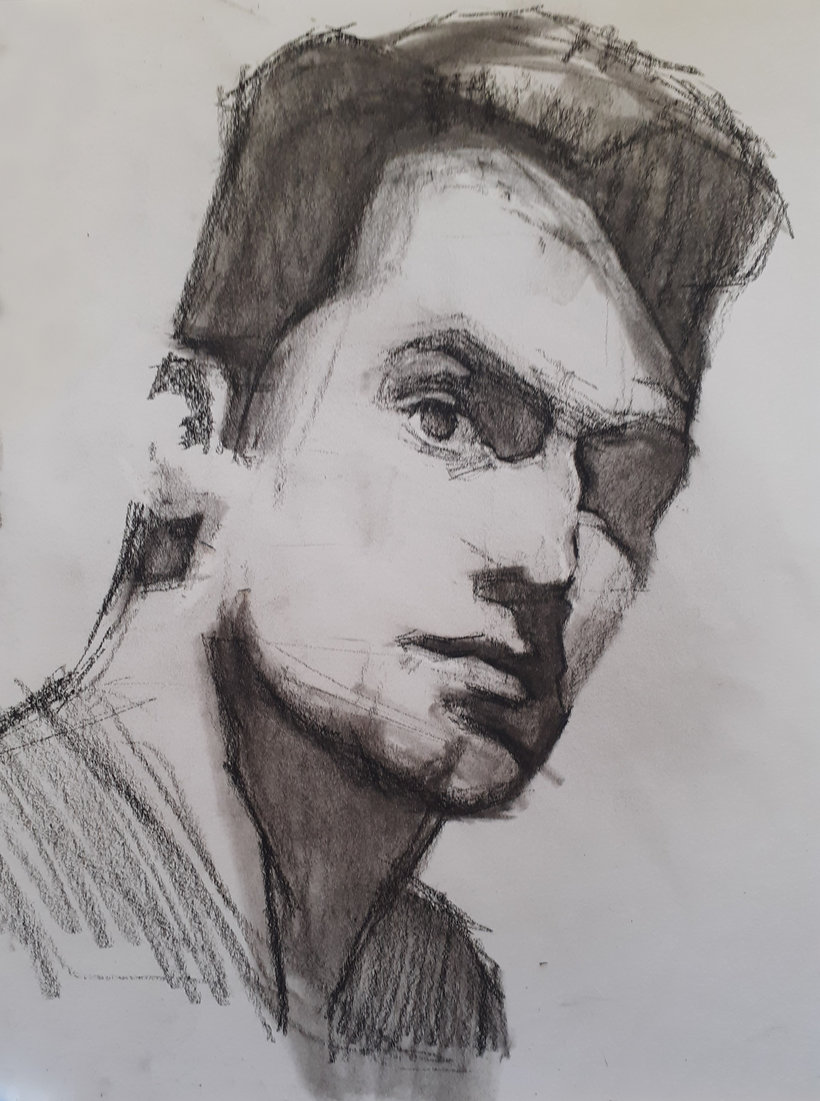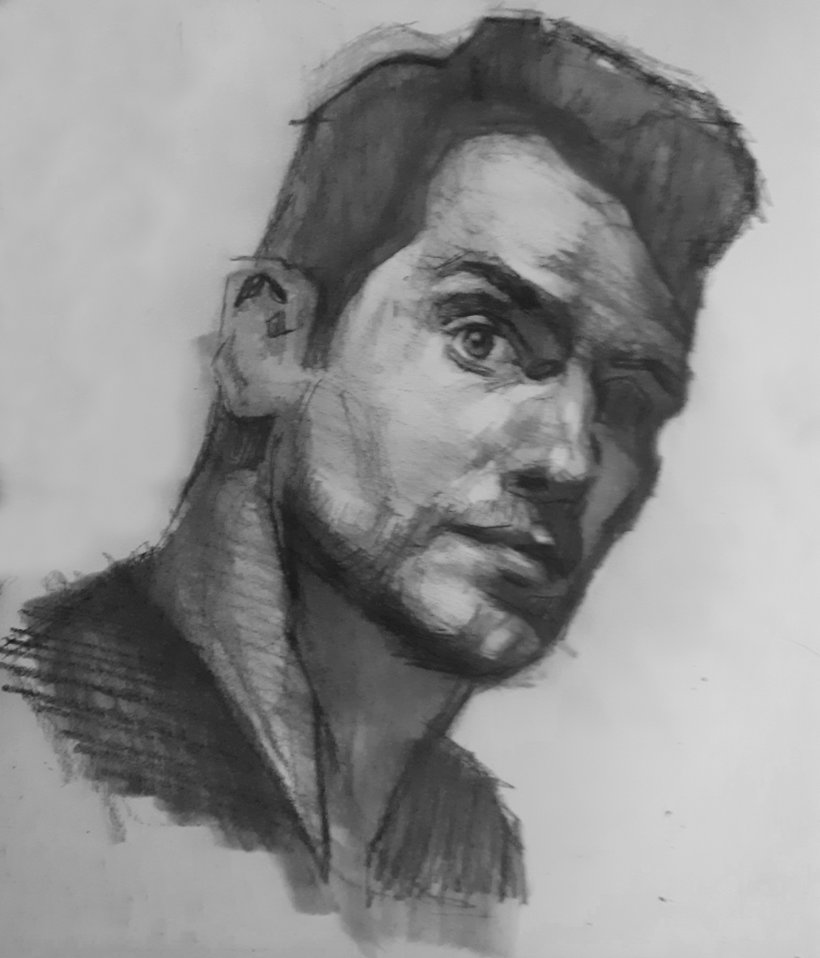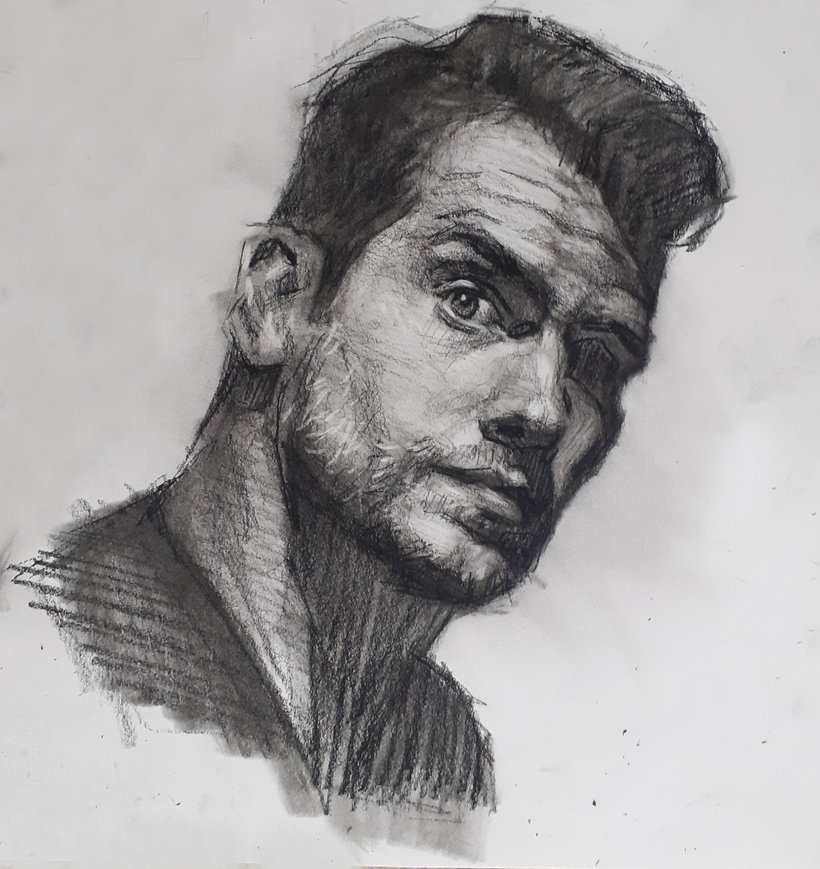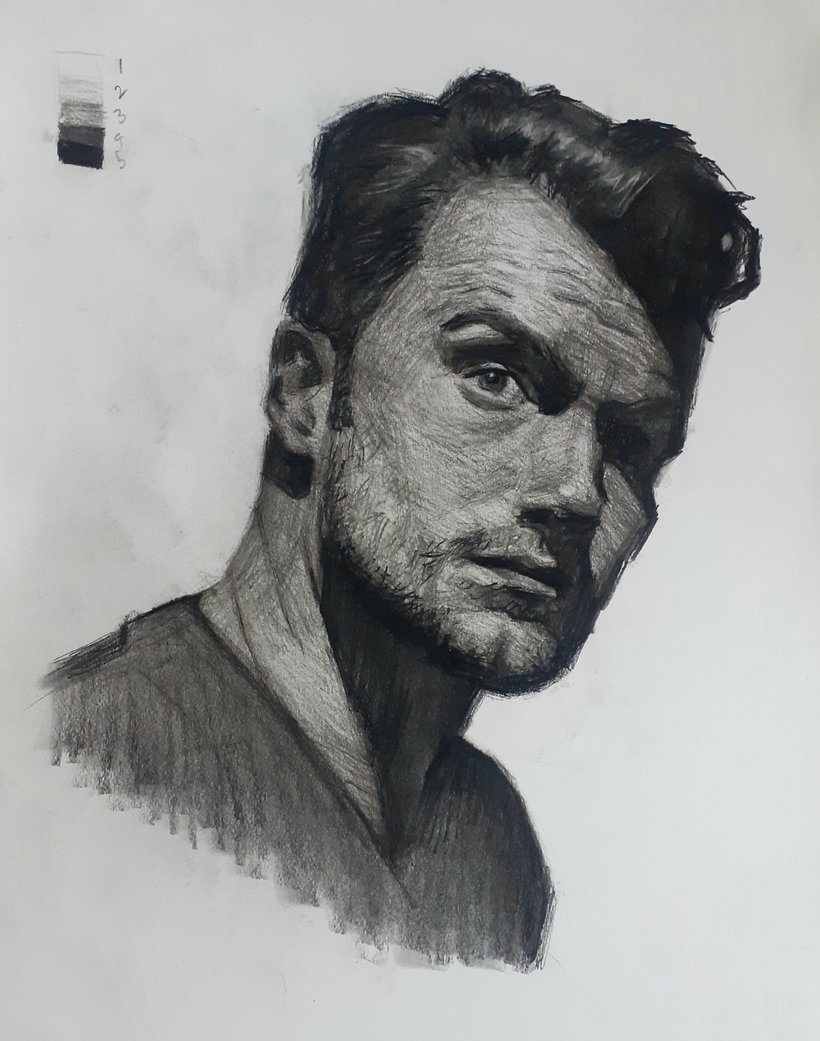Artistic Portrait Drawing: Capture Authentic Expressions
Course final project
A course by Sam Brisley , Portrait Artist
About the final project for: Artistic Portrait Drawing: Capture Authentic Expressions
Artistic Portrait Drawing: Capture Authentic Expressions
“Congratulations―we've now come to the end of this course! Thank you for taking the time to participate―I hope you have found it interesting and it's inspired you to create your own portrait. Try to make your portrait unique to you―you can use my reference image if you want, though I would recommend you to select your own image. Remember to pick one that has interesting shadows and a decent value range.





Partial transcription of the video
“So that's it, we've come to the end of the course. Thanks very much for following along with my lessons. I hope you feel inspired to create your own portraits. So to get started, grab your paper and your pencils. Whether you want to use graphite or carbon is up to you. And then start. By laying the proportions using the Loomis head. and then divide it into three roughly equal spaces. for your forehead. Your nose and your chin. Remember the Loomis head is only a guide Trust your own judgment. And if you feel you need to make tweaks to the proportions, feel free to do so. once you're happy wi...”
This transcript is automatically generated, so it may contain mistakes.
Course summary for: Artistic Portrait Drawing: Capture Authentic Expressions
-
Category
Illustration -
Areas
Artistic Drawing, Drawing, Figure Drawing, Fine Arts, Pencil Drawing, Portrait Drawing, Realistic Drawing, Sketching, Traditional illustration

Sam Brisley
A course by Sam Brisley
Sam Brisley relates his passion for portraiture and history to his hometown Stratford-upon-Avon, where Shakespeare was born. Incorporating historical elements into his portraits such as costumes and hair styles is his way of bringing his two passions together to create unique works of art. As a structural engineer from nine to five, and a portrait artist in his free time, Sam has been learning about portraiture, figure drawing, anatomy, and gesture drawing from a young age, always finding time to keep developing his abilities.
Sam has taught a number of drawing workshops, ranging from portraiture, figure drawing, and more. He also shares his work in progress drawings with his followers on Instagram to help others improve.
- 98% positive reviews (197)
- 5,179 students
- 16 lessons (3h 45m)
- 17 additional resources (3 files)
- Online and at your own pace
- Available on the app
- Audio: English, Spanish, French, Italian, Portuguese, Turkish
- Spanish · English · Portuguese · German · French · Italian · Polish · Dutch · Turkish · Romanian · Indonesian
- Level: Beginner
- Unlimited access forever
Category
Areas



